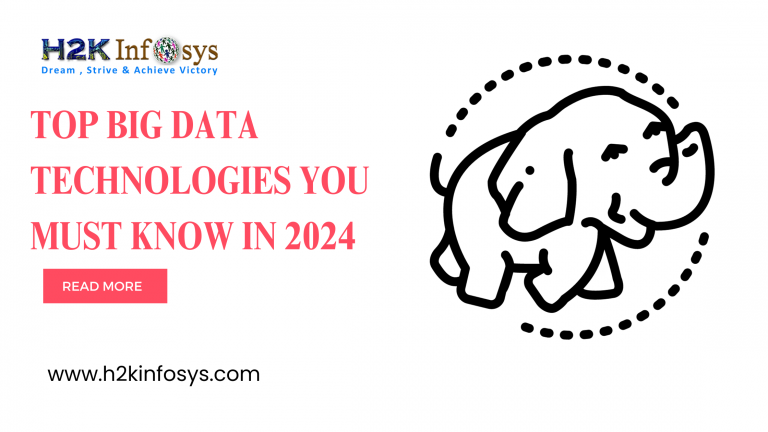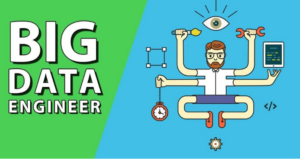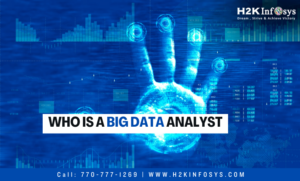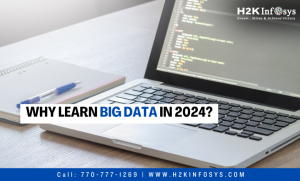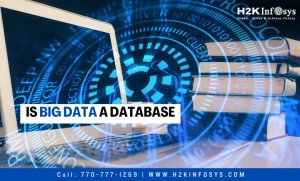Using a unique technique known as Big Data Technology, tech giants like Apple and Amazon are smoothly integrating with us in our daily lives. Operational analytics uses this technology to forecast future results, enhance supply chain efficiency, and control sales. There are essentially two technologies that can be employed with big data, and they are further broken down into four key areas. You can learn more by checking out our online Big Data course.
What is Big Data Technology?
The term “big data technology” describes the software tools used to handle various datasets and convert them into information that enterprises may use. This technology takes a massive amount of data with complicated structures and uses it to evaluate, interpret, and extract useful information. The newest and most developing technologies, such as artificial intelligence (AI), machine learning (ML), and the Internet of Things (IoT), are closely related to big data technology.
Applications of Big Data Technologies
Big data technology has several uses across various industries. Several acknowledged domains of utilisation consist of:
- Healthcare: Patient data is analysed using big data technology to create customised treatment regimens. It is also effective in creating treatment plans to maximise healthcare operations and provides predictive analysis for disease outbreaks.
- Finance: This technology provides useful information for identifying fraud in the realm of finance. It offers the target market consumer segmentation as well.
- E-Commerce: Big Data technology provides useful recommendation engines for individualised buying experiences in e-commerce.
- Education: This technology provides insights into student performance metrics and aids in the creation of adaptive learning platforms for individualised education.
- Retail: Big Data technology aids in the analysis of consumer behaviour for tailored marketing by merchants. It also emphasises methods for pricing optimization based on market trends and inventory management.
Types of Big Data Technology
Big Data Technology is mainly divided into two types: Operational Big Data Technologies and Analytical Big Data Technologies.
Operational Big Data Technologies
The data that individuals use to process things is the main emphasis of this kind of big data technology. Online transactions, social media posts, and data from any specific organisation are examples of the types of data that are typically included in operational big data. The use of big data technology-based software for analysis is the advantage of operation analytics. The information is also referred to as raw data and is the source of many analytical big data technologies.
Examples of Operational Big Data Technologies include, for instance:
- Data on social media platforms like Facebook and Instagram
- Online ticket booking systems
Analytical Big Data Technologies
- A better iteration of big data technologies is called analytical big data. In contrast to operational big data, this kind of big data technology is more complicated. When operational analytics reports have to be analysed in order to make significant business choices, analytical big data is typically employed. This implies that big data research is crucial for making business judgments.
The following are a few examples of analytical big data technologies:
- Stock Marketing Data
- Medical health records
- Top Big Data Technologies
Top Big Data Technologies are divided into four Sections:
- Data Storage
- Data Mining
- Data Analytics
Data Visualization
Data Storage
The following are the top-ranked technologies in data storage:
- Hadoop: One of the greatest tools for managing large amounts of data is Hadoop. Large datasets are stored and processed using this technique. Java was used to construct this app.
- MongoDB: Another crucial element of big data technology is MongoDB. It is frequently referred to as a No SQL database program and is a document database.
- RainStor: RainStor is a well-known database management solution made to handle and examine Big Data needs for businesses. It makes use of techniques that facilitate the handling and storage of enormous volumes of data.
- Hunk: Splunk’s Hunk software offers analytics for large datasets housed in Hadoop.
- Cassandra: A highly scalable NoSQL database, Apache Cassandra is made to manage massive volumes of data across numerous servers. This software has no points of failure.
Data Mining
The best products in data mining software are as follows:
- Presto: Designed for SQL queries on large datasets, Presto is a NoSQL database. It enables searching through data sources such as relational databases, Hive, Hadoop, and Cassandra.
- RapidMiner: RapidMiner is a platform for data science that offers an environment for predictive model analysis and machine learning.
- ElasticSearch: Full-text search and data analytics are two common uses for Elasticsearch, a distributed analytics engine.
The top data mining applications for operational analytics comprise:
- Apache Kafka: Applications that employ streaming are powered by Apache Kafka, an event streaming platform.
- Splunk: Splunk is a platform for event and log data analysis, monitoring, and search of generated data.
- KNIME: Users can create data workflows with this open-source data analytics and integration tool.
- Spark: An open-source platform called Spark offers speedy data processing.
- R Language: R is a computer language intended for use in graphics and statistical computation. It is applied to modelling and data analysis.
- Blockchain: Blockchain is a technology for digital ledgers. It keeps track of and validates computer network transactions
Data Visualization
The top data visualisation programs for operational analytics are as follows:
- Plotly: Plotly is an online application and Python graphing library for making high-quality, interactive dashboards and graphs.
- Tableau: Tableau is an effective tool for data visualisation. Users can use it to make interactive dashboards that are shared.
Emerging Big Data Technologies
The next great thing that will benefit all industries is the development of big data technologies for operational analytics. Among these technologies are:
- TensorFlow: The Google Brain team created TensorFlow, an open-source machine learning framework. Building and training learning models is one of its uses.
- Apache Beam: An open-source architecture for creating pipelines for batch and streaming data processing is called Apache Beam. It offers a means of representing workflows for data processing.
- Docker: It is a platform for creating, distributing, and using containerized applications. Developers can now package their applications into a single unit thanks to these containers. As such, it guarantees uniformity in various contexts.
- Airflow: Apache Airflow is a platform for managing and scheduling workflows. It makes it possible to organise complicated data, which facilitates work management and automation.
- Kubernetes: This platform is available in open source. It offers a distributed system operating environment by automatically managing containerized apps.
Conclusion
To learn more about Big Data, check out the Big Data online training.
